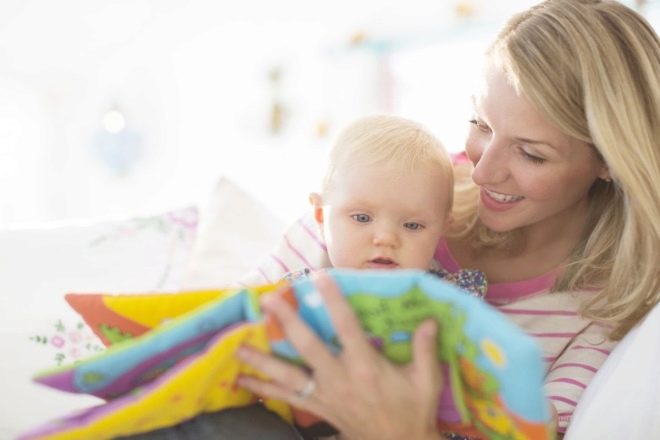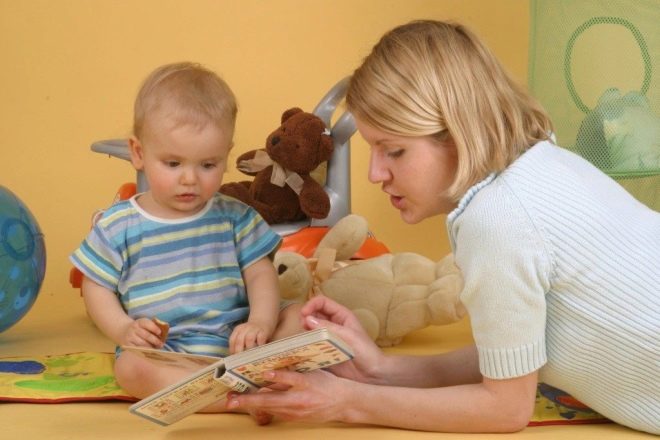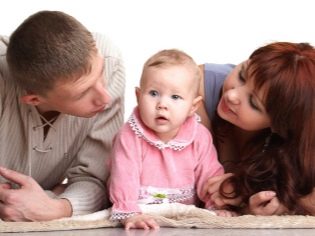When do children start to fuck?
Fluking and walking in babies are so closely interrelated that it is rather difficult to separate these stages of speech formation in an infant individually. Some sources indicate that children begin to cheat after they have mastered vocal craters - melodious vowels. Other specialists are inclined to believe that the initial stages of vocalization are agukani, and the following should be heard. Third sources claim that there is no difference at all. No matter how, the parents expect the first sounds from the baby with great impatience. We will describe the timing, characteristics and development of agukani in this article.
When to wait for the sounds?
The term "agukanie" in medicine does not exist, there is the concept of "gut", which includes various options for pronouncing the first sounds. To shout and roar kids begin at a certain stage of pre-verbal development. The first step in it is the cry. It is he who accompanies the birth of a little person and in the first weeks is the only means of communication of the infant with others.
A newborn baby screams because of hunger or cold, because of heat or infantile colic, because of wet diapers, and from a month of age and because of the need to communicate with mom. At the age of 2-3 months, as the hearing and vision develops, the baby learns to smile, to imitate the sounds that it hears. It is at this time that he begins to roar and fuck. But one can wait for the first sounds even later - up to 7 months some children stubbornly remain silent.
The next step in the development of speech is babbling - gnawing and aging are complicated, in them the syllables and sounds that are characteristic of the baby’s native language become distinguishable.
Infants start to shuffle not at their own will, and especially not because of the efforts of adults to teach a child to do it. Just agukanie and gulking provided for physiological and psychophysical development. Even deaf children agukkaut, but at the stage of babbling their pre-verbal development is inhibited, because they can not hear themselves.
At first, children sing simple vowels in all ways, and then, in the midst of the period of steadiness, they add to them guttural and reargut consonants - “g”, “k”.
It is usually considered that a healthy child by 4–5 months is quite capable of outputting whole roulades of repetitive sounds.
Reasons for silence
Do I need to worry and run to the doctors, if in three months the child does not agukat? Of course not, because the speech and pre-speech development of children obeys the rules of individuality and cannot be the same for all. In addition, periods of speech development can alternate with periods of complete and frightening silence of parents. So, baby, who pleased his mother with "aha" and "aha" from 2 months, may well be silent. If the crumb stopped aguing at 4 months or later, do not hesitate, this is a temporary phenomenon caused by fright, stress, illness, teething. The kid, as it were, for a time, forgets a new skill, but under favorable circumstances, he again returns to the boom.
Do not aguce baby can according to the "family tradition". If in a family the household is completely silent, not used to smiling, laughing, expressing their emotions vividly, then the children grow up the same. The more they talk, talk, smile with the child, the more the songs sing and read poems, the faster he will begin to repeat the sounds he has heard and these attempts will become aguating and walking.
The reason for visiting the doctor may be an unusual gnawing or agukanie in the form of a screech or a lowing, which the child uses to communicate after six months of age.The lowing, devoid of emotional tone, mood, can be the first sign of brain disorders or mental abnormalities.
The absence of agukaniya during the first year of life is characteristic of children with autism, with Down syndrome and other genetic syndromes. Sometimes the lack of natural sounds for babies speaks of a child receiving a cranial trauma, cerebral haemorrhage at birth or immediately after it, about the defeat of individual centers, including the center of speech and the recognition of sounds.
Premature babies begin to shake later than their full-term peers.
Toddlers weakened by frequent diseases or congenital ailments also begin to scream later, as are very melancholic and lazy babies who are simply such because of their character and temperament.
Can you teach gook?
Teach this can not be, but you can help the child. The main assistant to the mother in this matter will be daily and sufficient time communication with the baby.
Whatever happens at the current time, if the baby is awake, the mother needs to comment and explain all her actions out loud. Songs and rhymes should be told to the child when the adult has eye contact with the tot, so that the baby can observe facial expressions.
The baby will eagerly begin to roar and shuffle, if the mother speaks to him in a calm tone, often changes intonation, says chant. The loudness of speech also matters - no need to shout or whisper, children best perceive the average frequencies of human speech.
Mutual imitation is what parents need to achieve. In other words, the baby will repeat separate sounds after the mother, and the mother needs to repeat them for the baby. Then there will be a sound recognition effect, the baby will begin to laugh in response. Communication will become more emotional.
Mom should really try to call the baby all the toys and objects that she gives him. But it is necessary to establish pre-verbal contact with the baby when the apartment is relatively quiet. Children are easily distracted by extraneous sounds — by the cries of other children, by the television, by the loud speech of adults, and therefore the time for communication needs to be chosen which is favorable.
Teaching the baby to play sounds will help massage the palms and fingers of the baby, since the speech center of the brain and fine motor skills are closely interrelated. Useful massage speech therapy, based on light touch to the larynx and submandibular region. If nothing helps, you can try to apply the method of "passive imitation." So speech therapists and early childhood pathologists call lip exercises. Mom will need to pronounce “gu” and “ha” herself, at the same time opening the lower sponge of the crumbs with her finger, as if repeating her own articulation.
Children are in dire need of approval, and therefore any first sounds produced should be appreciated by adults. If mom and dad sincerely rejoice at them and show this joy to the child, then this will be the best incentive for the further development of gulag and agukan.
When the baby starts to pronounce the first sounds, it is necessary to record them on the phone or voice recorder. This is useful not only to please grandparents, but also in case the baby suddenly becomes silent at a certain period of its development. Then it will be possible to apply the technique of "imitation of oneself."
Including the recording to listen to the baby, you can achieve the effect of learning and playing the skill again.
How not to harm?
To achieve normal speech and pre-verbal development from a child, it is not necessary to force him to say something. If the baby feels annoyance and irritation coming from the closest person - mother, it will be much harder for him to begin to communicate with her and with the world around her.
Do not need too long "lisp" with the crumbs. The imitation of his "gu-gu" and "agag" should not last longer than six months.After this, the baby should become a full-fledged interlocutor, with whom the conversations are quite adult.
Otherwise, the mental development and development of speech skills will slow down significantly, the crumb will remain for a long time at the pre-speech stage of development.
Try to avoid conflicts and open quarrels in the presence of the baby. Tension and anger in the voice of adults does not at all stimulate the desire to repeat what was heard. Children growing up in families with a dysfunctional psychological climate develop with great delay.
Dr. Komarovsky will talk about the norms and timing of the development of children in the next video.




















